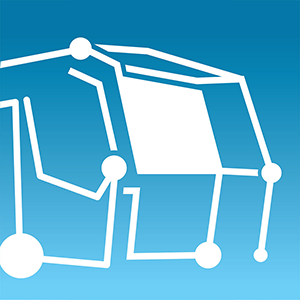
Lifting and lining units must ensure highest precision during the lifting and lining process as well as careful handling of the skeleton track. On the basis of many years of experience, Plasser & Theurer has developed various lifting and lining units which fulfil both requirements and are well suited for specific operating conditions. Some of the most important units from this extensive range are described in the following.
This unit is fitted with two lining rollers and two roller lifting clamps per rail, gripping the rail under the rail head. They lift and line in one operation. At the start of work, the unit is lowered onto the rail and remains there during the entire working operation. When the machine travels forward during the tamping cycles, the pressure on the unit is switched off so that the rollers can move along easily.
This unit has lifting hooks and lining rollers. On request, it is possible to mount additional roller lifting clamps. Lifting and lining is performed in one operation. The lifting hooks can be applied either under the rail head or under the rail base. The entire unit can also be displaced in longitudinal direction. This ensures that the unit can be adapted to every situation during turnout maintenance, achieving an optimum lifting and lining process.
For turnout tamping in the area of the long bearers, we offer an automatic, synchronous 3-rail lifting unit for the diverging rail. Using the lifting and lining unit, the rail is raised synchronously. The length of the telescopic arm adapts automatically to the course of the rails as the machine moves forward.
This ensures an optimal distribution of the lifting forces. Particularly on heavy track structures, the stresses on rail fastenings, rails and sleepers are within the permissible range at all times. Equipping the unit with a slewing limitation prevents fouling of the adjacent track clearance gauge during work.
Deutsche Bahn (DB AG) requires the use of the supplementary lift when tamping heavy turnout designs.
In order to achieve an exact lift of the diverging rail even with divided long bearers, a rotating laser is used to transfer the exact lifting value of the main lift to the synchronous supplementary lift. The laser is mounted on the levelling measuring car of the main line. The receiver at the supplementary lifting device of the diverging rail controls the lift and places the turnout in the exact position.